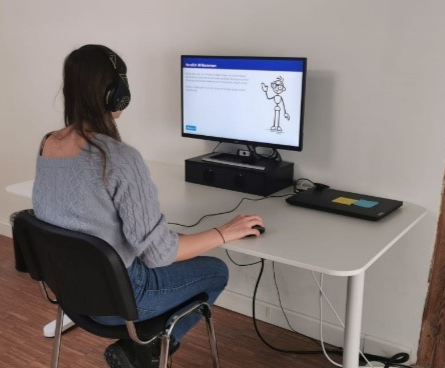
Learning Environments
Influence and Application of Odorization in the Context of Learning and Memory Functioning
Contact: David Daxberger
Background
An important field of research is the development of learning environments to improve learning for instance at school or work. In this context, research showed that environmental effects and learning content have strong effects on the recall performance. To influence the environment, odorization is a well-known method. The olfactory sensory channel can recall information when the same odor is presented. Odorization therefore poses a promising approach to improve performance in concrete learning tasks but has not received much attention in current research yet.


Experimental setup: Participants during the experiment
Method & Instruments
In a series of studies, ixp aimed to understand and examine the influence of odorization in learning contexts. In the respective studies, different learning tasks were considered. One study measured learning performance via the reproduction of a word list whereas the other two studies focused on the recall of content that was shown in a video. The correctness of the answers, the answer time duration as well as ECG data were measured. In addition, subjective valence, arousal, and confidence in answer correctness were collected.


Odorization sticks
Results
Overall, the results show that odorization is not always suitable to increase learning performance, likely since it depends on many parameters. Odorization was shown to improve performance in recalling a list of words but not in remembering video content. Physiological data revealed a higher activation due to the odorization but answer correctness and duration revealed lower learning performance. The results also show that despite a poorer performance, participants felt more confident in case of congruent compared to incongruent odor. As a conclusion, odors do not always increase performance. Instead, they can also be distracting or lead to a false believe regarding answer correctness.

Experimental procedure
Context of Application
All in all, these studies enabled ixp to receive important insights regarding odorization and learning environments. Environmental parameters, for instance affected by specific odorization, seem to strongly correlate with the type and quantity of learning content. As could be seen, video content and additional odorization leads to a stimulus overload. When using odorization, it should be considered that it can put a lot of strain on the sensory channels as well as distract from learning content. In addition, learning content must be chosen with attention to other surrounding factors. This knowledge can now be used to develop further learning environments in which odor may improve the persomance as well as to investigate odor in wider contexts such as advertising.
